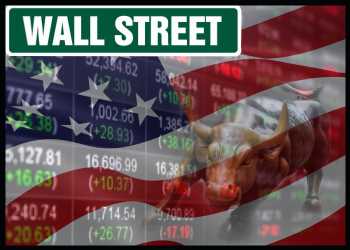U.S. stocks saw a choppy ride on Wednesday but the Dow and the S&P 500 still managed to snap a three-day losing streak and close on a positive note.
The mood was cautious as investors looked ahead to Fed Chair Jerome Powell’s speech at the central bank’s economic symposium at Jackson Hole, Wyoming on Friday, for clues about the bank’s outlook for the economy and interest rates.
The Dow ended with a gain of 59.64 points or 0.18 percent at 32,969.23. The S&P 500 settled at 4,140.77, gaining 12.04 points or 0.29 percent, while the Nasdaq advanced 50.23 points or 0.41 percent to 12,431.53.
Energy stocks surged higher, tracking firm crude oil prices.
Salesforce.com and Boeing both gained more than 2 percent. Walt Disney, American Express, Walmart, Nike, Goldman Sachs and Chevron posted modest gains.
Wallgreens Boots Alliance, Caterpillar, IBM, Cisco Systems and Merck ended notably lower.
Nordstrom shares plunged 19 percent after the company lowered its full-year outlook. The stock’s fall triggered heavy selling at several counters in the retail sector.
Data from the Commerce Department showed new orders for U.S. manufactured durable goods came in unchanged in July, as against expectations for a 0.6 percent increase. Durable goods orders increased by an upwardly revised 2.2 percent in June.
Data from the National Association of Realtors showed pending home sales dropped by 19.89 percent in July, after falling by an upwardly revised 20.2 percent in June.
In overseas trading, Asian stocks fell for an eighth straight session on Wednesday, with Europe’s energy woes and a drought-fueled power crisis in China keeping investors nervous.
Investors also braced for a hawkish message from the Federal Reserve at this week’s Jackson Hole symposium.
The major European markets closed higher on Wednesday even as the mood remained cautious after comments from Minneapolis Fed President Neel Kashkari reiterated the U.S. central bank’s commitment to bringing inflation under control through tighter monetary policy.
Source: Read Full Article
-
‘Challenge for us is resource management’
-
Sterling rises as Jeremy Hunt prepares to reverse more of Truss’s plan
-
European Shares May Struggle For Direction In Thin Holiday Trade
-
Most inappropriate workplace attire – from gym gear to flip-flops
-
Sony merger: NCLT directs Zee to call shareholder meet on October 14

